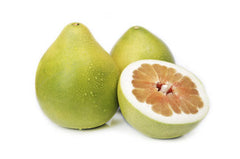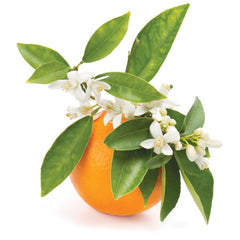What Does Rosewood Smell Like?
Click For Affordable Inspired Perfume Alternatives

Embark on a aromatic journey to the heart of lush forests and explore the enchanting aroma of rosewood. Derived from the aromatic wood of the rosewood tree, this fragrance boasts a distinctive and captivating scent that captures the essence of wooded landscapes. Join us as we delve into the question: What does rosewood smell like?
What Does Rosewood Smell Like?
The fragrance of rosewood is a harmonious blend of woody warmth, floral sweetness, and a touch of spice. Imagine the earthy and comforting scent of freshly cut wood interwoven with the delicate sweetness of blooming flowers. Rosewood's aroma is a celebration of nature, offering a rich and grounding olfactory experience.
Earthy Elegance: A Forest Stroll
As you approach rosewood, the first olfactory impression is an earthy elegance reminiscent of a peaceful forest stroll. Picture the comforting scent of freshly cut wood, like walking through a serene woodland where the aroma of fallen leaves and damp soil mingles with the woody richness of rosewood. The fragrance is an ode to the grounding and calming qualities of nature.
Floral Harmony: Blooms in the Forest
The scent of rosewood unfolds into a floral harmony that adds a touch of sweetness to its woody base. The delicate and subtle floral notes evoke the image of blossoms peeking through the dense forest foliage. Rosewood's fragrance is a delicate dance between the woody and floral elements, creating a well-balanced and sophisticated olfactory experience.
Spicy Accent: Nature's Warm Embrace
Adding depth to the fragrance is a subtle spicy accent, like a warm embrace from nature itself. The spicy undertones contribute to the complexity of rosewood's scent, creating a captivating and inviting aroma that lingers in the air. The overall effect is one of warmth and comfort, reminiscent of the coziness found in the heart of a thriving forest.
Sensual Serenity: Essence of Natural Beauty
Delve deeper into the scent, and you may discover a sensual serenity that characterizes rosewood's fragrance. It's as if the aroma encapsulates the essence of the tree's natural beauty, inviting you to experience a moment of tranquility and connection with the natural world.
Rosewood's Arboreal Symphony
Therefore, rosewood's fragrance is an arboreal symphony of earthy elegance, floral harmony, spicy accent, and sensual serenity. It stands as a testament to the rich and multifaceted qualities of this precious wood, offering a sensory experience that is both grounding and elevating. Rosewood, with its comforting and complex aroma, invites us to immerse ourselves in the timeless beauty of wooded landscapes, a fragrant journey that unfolds with every inhalation.
Factors Influencing the Scent of Rosewood Fragrance Oil
Rosewood fragrance oil is a carefully crafted composition designed to capture the warm and woody aroma of the rosewood tree. The formulation of this fragrance involves a thoughtful combination of aromatic compounds. Here are several factors that contribute to the distinctive and captivating scent of Rosewood fragrance oil:
Fragrance Composition: Rosewood fragrance oil is a meticulously blended mixture of various aromatic compounds, chosen to replicate the characteristic scent of rosewood. This composition may include both synthetic and natural ingredients to achieve the desired olfactory profile.
Wood Essence: At the heart of the fragrance lies the essence of rosewood. Notes of woody warmth, reminiscent of freshly cut wood, are intricately blended to mirror the comforting and earthy aroma of rosewood.
Synthetic vs. Natural Components: Rosewood fragrance oil often combines both synthetic and natural ingredients. Perfumers make choices to strike a balance between authenticity, cost considerations, and sustainability in the selection of these components.
Extraction Method: The method used to create Rosewood fragrance oil, whether through distillation or extraction, plays a crucial role in defining the aromatic profile. Specific extraction methods contribute to the faithful recreation of the warm and woody scent.
Additional Woody and Floral Notes in the Blend: The fragrance may incorporate additional woody elements or subtle floral notes to enhance complexity. These complementary notes contribute to the overall richness of the scent, capturing the essence of rosewood.
Quality of Ingredients: The quality of raw materials, including the source of essential components, directly influences the warmth and authenticity of the rosewood scent in the fragrance oil.
Perfumer's Artistry: The expertise and creativity of the perfumer or fragrance creator are crucial. Perfumers leverage their skills to balance different components, creating a distinctive and delightful rosewood fragrance.
Regulatory Compliance: Adherence to regulatory standards and restrictions on certain fragrance ingredients is crucial. Compliance with safety guidelines requires careful consideration of ingredient choices to ensure the fragrance is safe for use.
Usage in Products: Rosewood fragrance oil can be incorporated into various products, including perfumes, candles, room sprays, and bath products. The interaction with other ingredients in specific product formulations can influence how the rosewood scent is perceived.
Product Type and Concentration: The concentration of Rosewood fragrance oil in a product affects the strength and longevity of the scent. Higher concentrations may be suitable for perfumes, while lower concentrations work well for candles, soaps, or room sprays.
Storage Conditions: Proper storage conditions for Rosewood fragrance oil, both before and after formulation, are essential to maintain its stability and scent. Storing it in a cool, dark environment helps preserve the warmth and richness of the fragrance.
Consumer Preferences and Trends: Formulations of Rosewood fragrance may adapt to changing consumer preferences and market trends. The popularity of warm and woody scents or unique blends may influence product formulations.
Artisanal vs. Commercial Production: Differences between artisanal and commercial production of Rosewood fragrance oil may impact ingredient sourcing, formulation, and overall quality. Artisanal methods may emphasize craftsmanship and unique blends.
Post-Formulation Processing: Additional processes, such as aging or filtering after the formulation of the fragrance oil, may influence the final scent and contribute to the desired characteristics.
Exploring different formulations of Rosewood fragrance oil allows consumers to experience a range of warm and woody scents reminiscent of the comforting and sophisticated aroma of rosewood. Individual preferences play a significant role in selecting the perfect Rosewood fragrance for various applications.
What to Look for When Choosing Rosewood Fragrance Oil
Selecting a rosewood fragrance oil allows you to enjoy the warm and woody aroma of rosewood in various applications. Whether used in perfumes, candles, diffusers, or personal care products, consider these factors to ensure you choose a high-quality and authentic rosewood fragrance oil:
Wood Authenticity: Seek a rosewood fragrance oil that authentically captures the warm, woody, and comforting scent of real rosewood. Look for a fragrance that embodies the unique wood notes characteristic of quality rosewood.
Natural vs. Synthetic: Determine whether the fragrance oil is derived from natural sources or is synthetically produced. Natural rosewood oils can provide a more nuanced and realistic scent, closely resembling the aroma of actual rosewood.
Blend Ingredients: Check the blend of ingredients in the fragrance oil. A well-crafted combination of natural and synthetic components can contribute to a balanced and long-lasting rosewood fragrance.
Intensity Level: Consider the intensity level of the rosewood fragrance. Some may prefer a subtle and comforting scent, while others may desire a more pronounced and enveloping aroma. Look for a fragrance that aligns with your desired level of intensity.
Versatility: Choose a fragrance oil that is versatile and suitable for various applications. Whether used in candles, soaps, lotions, or diffusers, versatility allows you to enjoy the warm and woody scent in different settings.
Packaging: Assess the packaging of the fragrance oil. Opt for a bottle that is dark or opaque to protect the oil from light exposure, preserving its warmth and richness and preventing deterioration over time.
No Residue or Discoloration: Ensure that the rosewood fragrance oil leaves no residue or discoloration when incorporated into different products. A high-quality oil should seamlessly integrate into various mediums without causing unwanted effects.
Manufacturer Reputation: Research the reputation of the manufacturer or brand. Choose well-established brands with positive reviews, as they are more likely to produce reliable and high-quality fragrance oils.
Testing Options: Look for fragrance oils that offer testing options or sample sizes. This allows you to experience the scent firsthand before committing to a larger quantity, ensuring it aligns with your preferences.
Ethical and Sustainable Practices: Consider the manufacturer's commitment to ethical and sustainable practices. Brands that prioritize responsible sourcing and environmentally friendly production contribute to a more conscientious choice.
By considering these factors, you'll be better equipped to choose a rosewood fragrance oil that not only aligns with your preferences but also ensures a high-quality and comforting olfactory experience in your chosen applications.
Where to Find Reputable Rosewood Fragrance Oils
When searching for high-quality rosewood fragrance oils, explore reputable sources that specialize in fragrance and aromatherapy products. Here are some recommended places to find authentic and reliable rosewood fragrance oils:
Specialty Candle and Soap Supply Stores: Explore specialty stores dedicated to candle-making and soap supplies. These stores often carry a variety of fragrance oils, including unique scents like rosewood. Check for options suitable for crafting candles, soaps, and other scented products.
Online Fragrance Oil Retailers: Browse reputable online platforms specializing in fragrance oils. Websites and retailers dedicated to aromatherapy, candle making, or DIY crafting may have an extensive selection of rosewood fragrance oils. Read product descriptions and customer reviews for authenticity and quality.
Artisanal or Handmade Markets: Attend artisanal markets or craft fairs where independent sellers showcase handmade products. Artisan vendors may create unique and carefully crafted rosewood fragrance oils, providing an opportunity to explore distinct options.
Local Essential Oil or Perfume Shops: Specialty shops focusing on essential oils or perfumes may carry rosewood fragrance oils. These stores often prioritize high-quality scents and may offer a range of warm and woody aromas.
Online Marketplaces: Platforms like Etsy or other online marketplaces featuring handmade or artisanal products can be sources for rosewood fragrance oils. Look for sellers with positive reviews and detailed information about their products.
Aromatherapy Stores: Aromatherapy stores often carry a variety of fragrance oils for different applications. Inquire about the availability of rosewood scents to add a warm and comforting aroma to your living space.
Local Farmers' Markets or Herbal Shops: Check with local farmers' markets or herbal shops that specialize in natural products. Some of these establishments may offer fragrance oils with botanical scents, including rosewood.
Specialty Perfume Retailers: Explore specialty perfume shops that focus on unique and exotic fragrances. These stores may carry rosewood fragrance oils known for their distinctive and warm wood notes.
Word of Mouth: Seek recommendations from friends, family, or members of fragrance communities for trusted sources of rosewood fragrance oils. Personal experiences and suggestions can guide you to reputable suppliers known for quality and authenticity.
Check Ingredients and Descriptions: Before making a purchase, carefully read product descriptions and check ingredient lists for rosewood fragrance oils. Authentic and reputable sellers provide clear information about the composition and intended use of their products.
Note: Rosewood fragrance oils can bring a warm and woody note to your DIY projects. Ensure that the fragrance oil you choose aligns with your intended use, whether it's for perfumes, candles, diffusers, or other creative endeavors. Follow safety guidelines provided by the manufacturer for proper usage.
20 Questions and Answers about Rosewood:
-
What is Rosewood in perfumery?
- Rosewood in perfumery refers to the essential oil extracted from the wood of the rosewood tree. The oil is valued for its sweet, floral, and woody fragrance.
-
Which species of tree produces Rosewood for perfumery?
- The primary source of rosewood oil in perfumery comes from the Aniba rosaeodora tree, native to the Amazon rainforest.
-
What does Rosewood smell like in perfumes?
- Rosewood imparts a sweet, floral aroma with hints of woodiness. It is often described as having a warm and comforting scent.
-
Are there different varieties of Rosewood used in perfumery?
- Aniba rosaeodora is the most commonly used species in perfumery, but other species like Aniba parviflora may also be used.
-
How is Rosewood oil extracted for perfumes?
- The essential oil is typically extracted from the wood through steam distillation.
-
What are the main chemical components of Rosewood oil?
- Linalool is the primary component, giving rosewood its distinctive fragrance. Other components include cineole, camphor, and terpineol.
-
Is Rosewood oil sustainable in perfumery?
- Due to concerns about deforestation, the use of traditional rosewood oil has decreased, and sustainable alternatives are being explored.
-
What are the potential benefits of Rosewood oil in perfumery?
- Rosewood oil is believed to have calming and uplifting properties, making it a popular choice in aromatherapy and perfumery.
-
Are there synthetic alternatives to Rosewood oil in perfumery?
- Yes, synthetic alternatives that mimic the scent of rosewood are available to address sustainability concerns.
-
Which fragrance families often incorporate Rosewood notes?
- Rosewood notes can be found in floral, woody, and oriental fragrance families.
-
Can Rosewood be a base note in perfumes?
- Yes, rosewood is often used as a middle to base note in perfumes, contributing to the fragrance's overall longevity.
-
What are some popular perfumes that feature Rosewood notes?
- Chanel's Bois des Iles and Tom Ford's Rosewood are examples of perfumes that highlight the note.
-
Does Rosewood oil have therapeutic properties in addition to its aromatic qualities?
- Rosewood oil is believed to have antimicrobial and anti-inflammatory properties, but it should be used cautiously due to sustainability concerns.
-
Can Rosewood oil be blended with other essential oils in perfumery?
- Yes, rosewood oil blends well with various oils, including lavender, bergamot, geranium, and citrus oils.
-
How does Rosewood oil evolve on the skin over time?
- The fragrance of rosewood oil tends to soften and mellow as it dries down, revealing a more subtle and lingering scent.
-
Are there cultural or historical associations with Rosewood in perfumery?
- Rosewood has been used historically in traditional medicine and spiritual practices. Its aromatic qualities have been valued in various cultures.
-
Does the geographical origin of Rosewood affect its scent in perfumes?
- The geographical origin can influence the aroma, but the species used and the extraction process also play significant roles.
-
Is Rosewood oil used in other industries besides perfumery?
- Yes, rosewood oil has applications in skincare, aromatherapy, and traditional medicine.
-
How should Rosewood-based perfumes be stored to preserve their fragrance?
- Perfumes, including those with rosewood notes, should be stored in a cool, dark place away from direct sunlight to maintain their quality.
-
Are there regulations or guidelines regarding the use of Rosewood in perfumery?
- Yes, there are regulations and guidelines related to sustainability, as rosewood has been subject to trade restrictions due to environmental concerns. Perfumers often seek sustainable alternatives or synthetic substitutes.
Buy Perfumes - Best Online Retailers
Click For Affordable Inspired Perfume Alternatives
Click For The Best Niche Perfumes & Decants
Pheromone Perfumes - Confidence, Attraction & Appeal - Click For More
Home Fragrances & Candle Warmers - Click To Scent Up Your Spaces Today!



